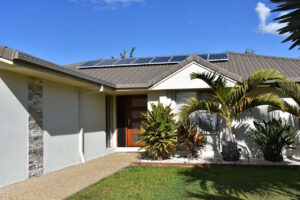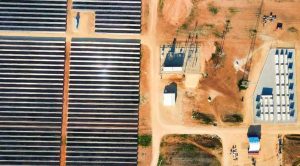The ongoing debate about storage here in Australia, and especially in NSW, is quite interesting. I have been following this debate for the last few months and note the recent articles about Vector Energy (here, here and here) and their leasing package has stirred significant discussion.
As a Western Sydney resident, who has an 8.2kW net metered solar system installed (in June 2011, just after the solar bonus scheme closed), I have seen the rapid uptake of solar in an effort to contain ever increasing electricity prices. And yes, I know it’s a big system but I have a couple of teenage kids who chew power like a Gobledok let loose in a chip factory!!
I have also been witness to the anger and frustration felt by many residents, who after installing solar systems found they were getting no benefit for the excess electricity they produce during the day, as most of these people are out of the house between 6am and 6pm.
The solar systems they have installed basically run their fridges while they are at work during the day and when they get home they don’t have the benefit of using the excess power their systems have produced and their electricity retailer gives them either no feed-in-tariff, or a miniscule 6c – 8c/kWh for the excess electricity provided to the grid.
These people then find that the electricity retailers do not want to negotiate a better deal with them and appear to treat them with contempt.
So what do these people do? They join forces and push for a better deal collectively.
To this end residents have approached Power Group Purchasing to attempt to negotiate a better deal for them. Power Group Purchasing have set up the following registration page for anyone interested in taking part, www.powergrouppurchasing.com/netmetersolar .
Perhaps if NSW residents unite and push for a better FIT it will force the electricity retailers to seriously consider alternatives. If they continue to bury their collective heads in the sand then this people power movement will ultimately tip the balance towards the potential ‘death spiral’ in the electricity sector which is now foreshadowed.
If NSW solar customers start turning to battery storage – due to inaction from electricity retailers – then the customer base will start to shift downward, causing the electricity retailers and network operators to try and recoup costs elsewhere, thus forcing prices up even more and ultimately causing even more customers with solar to remove themselves from the grid.
There are more then 200,000 residential solar PV systems in NSW currently and this number is growing daily. Consider for a second, how many of the 1 million (new) solar PV systems promised by the Abbott Government will be in NSW? Just 15% would be a further 150,000 new installations, and these people will add their voices to the cry for a better deal on FIT’s and electricity pricing.
The electricity retailers, and gentailers, need to act NOW on storage.
After reading the most recent article on Vector Energy, I contacted AGL Solar to see if they were considering a package along the lines of Vector’s leasing package. They seemed very interested and informed me they were investigating storage systems, and hoped to have a clear idea of an option in about 2 years. Seriously, 2 years?
I also took heart from the recent article concerning Ausgrid’s efforts to incorporate storage into the grid. Who knew they’d been testing 5KW systems in Newcastle? What about Western Sydney? Is Endeavour Energy doing anything? I’ve tried to find out, with little response to date.
Why is it that New Zealand can come up with a viable solution to solar & storage and implement it so well and yet our electricity retailer’s/gentailer’s show little interest?
If Vector Energy can provide a 3kW solar PV system with a 10kW battery storage system on a monthly fee of $70.00, surely Australian electricity companies can provide a competitive leasing option for a storage system.
Seriously, if an electricity retailer provided a leasing package for a storage system to customers who have already installed a solar PV system at a competitive rate of, say $50.00 – $60.00 a month over 10 – 12 years; this would generate a guaranteed quarterly income of $150.00 – $180.00 per unit. Yes there would be an incurred up-front cost, but as the cost of battery systems comes down over the coming years the profit margin would increase per unit in the market, thus generating stability in the electricity sector.
With most households, who have solar installed, still having quarterly bills around the $400.00 – $500.00 a quarter the option of paying under $200.00 a quarter to use much more of their own power would be very enticing to them. And it would assist the electricity distributors in dealing more effectively with peak demands on power.
Only as a united voice can we hope to pressure the retailers to provide the service we want here in NSW!










